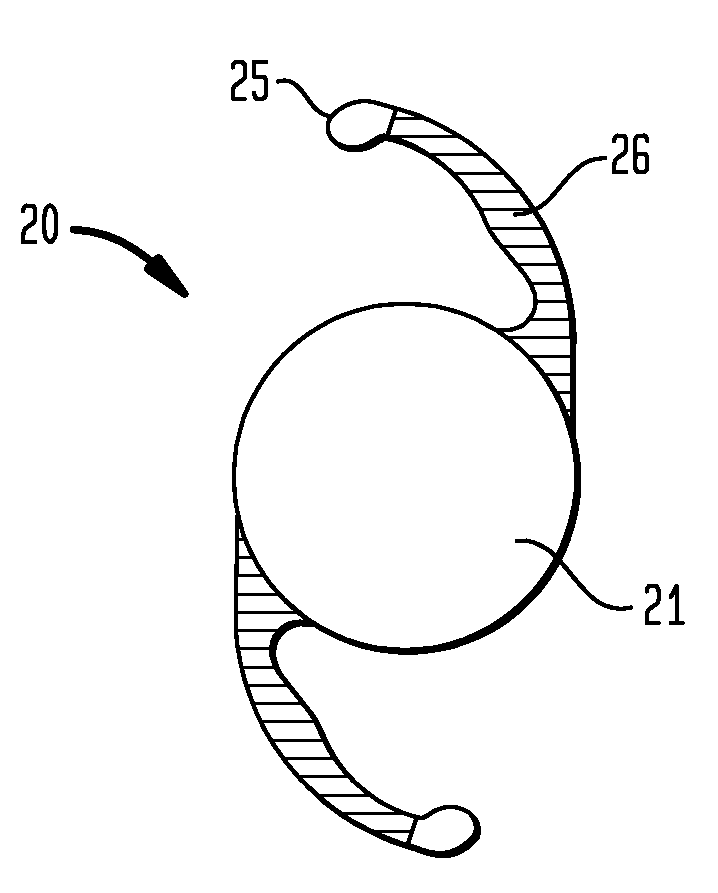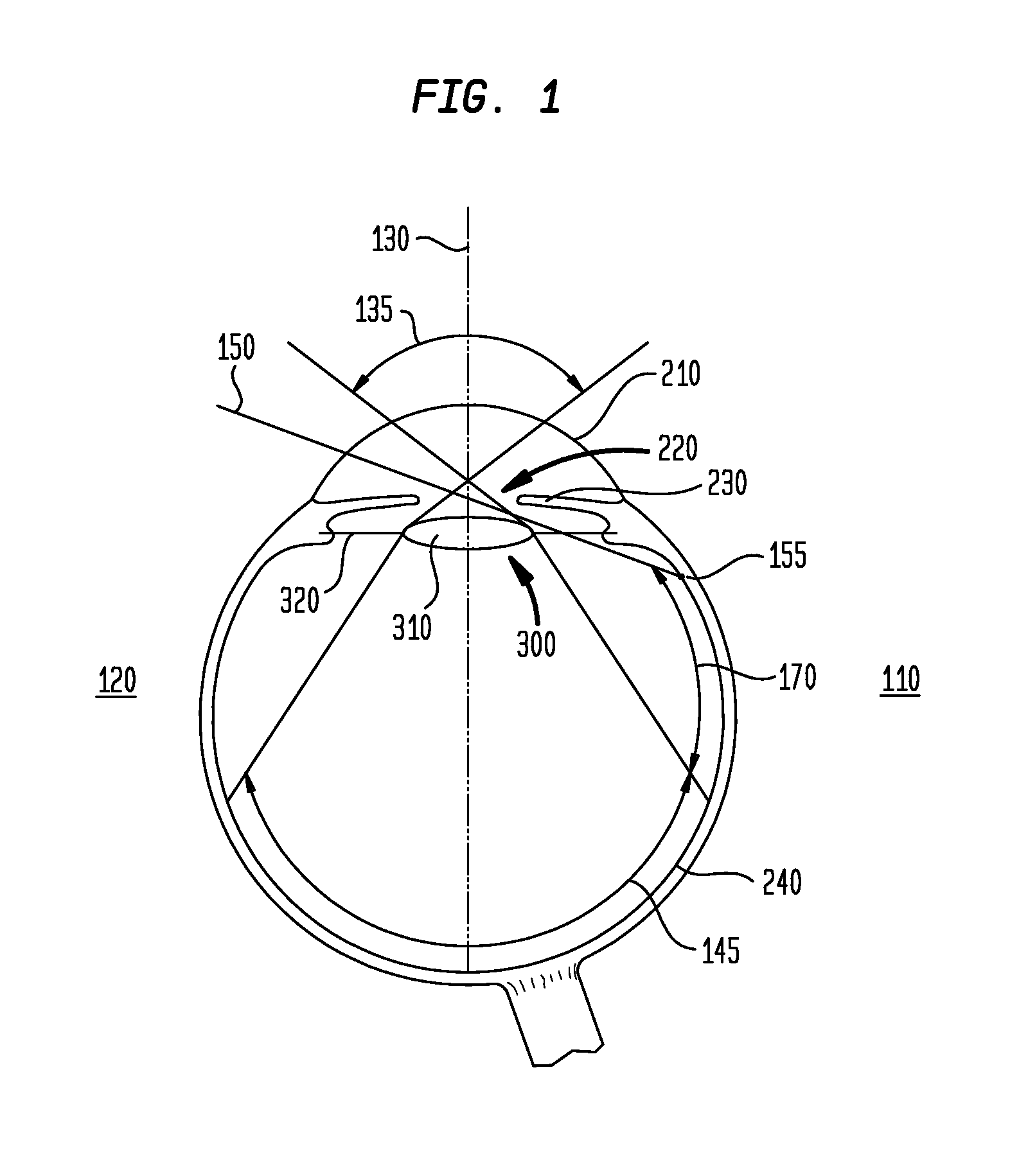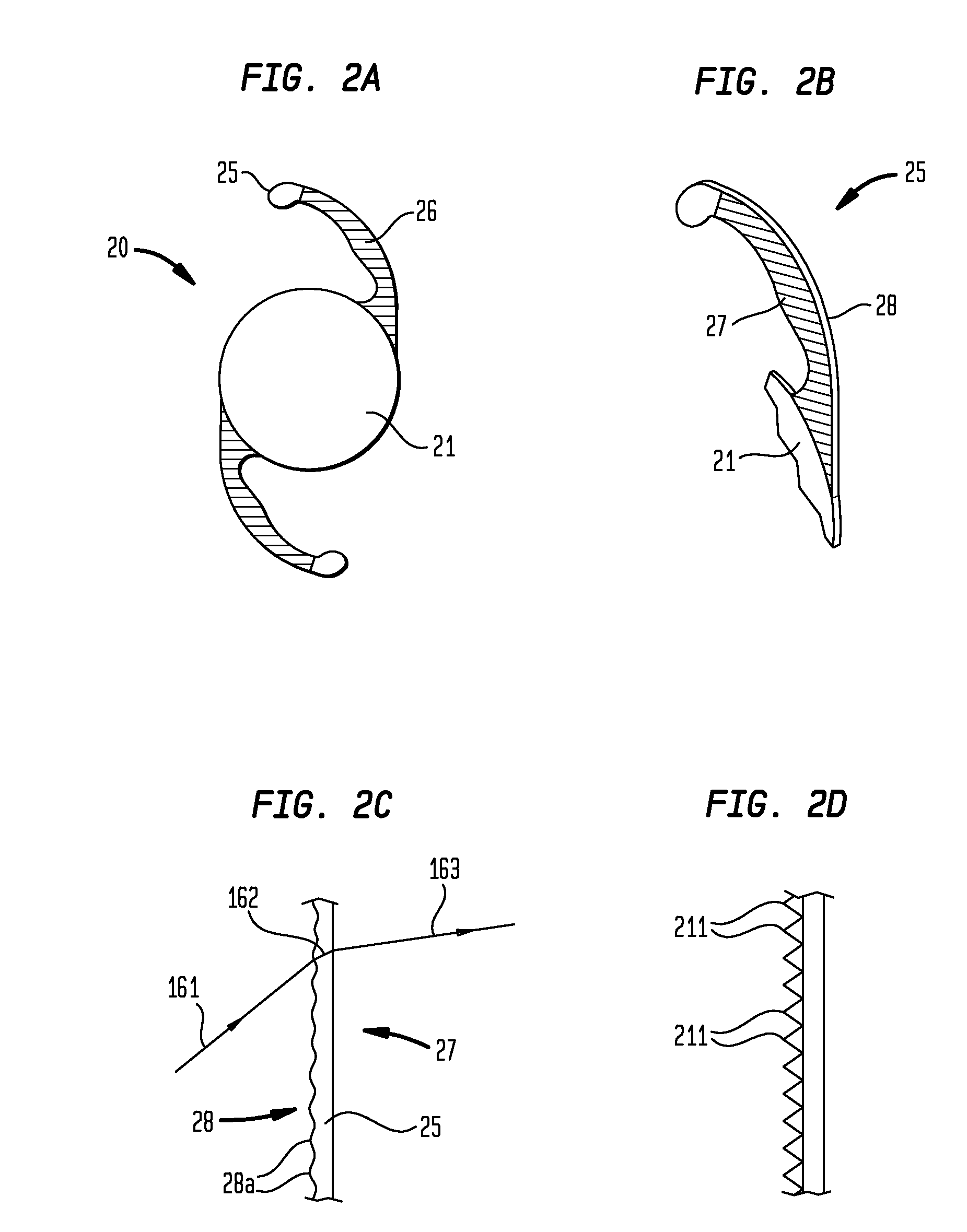Haptic Junction Designs to Reduce Negative Dysphotopsia
a technology of haptic junction and dysphotopsia, which is applied in the field of intraocular lenses, can solve the problems of peripheral visual artifact perception, iol optics may not always be large enough, and enhanced peripheral vision can lead to, or exacerbate, the perception of peripheral visual artifacts
- Summary
- Abstract
- Description
- Claims
- Application Information
AI Technical Summary
Benefits of technology
Problems solved by technology
Method used
Image
Examples
Embodiment Construction
[0031]The present invention generally provides ophthalmic methods and lenses (e.g., intraocular lenses (IOLs)), which can ameliorate, and preferably prevent, the perception of dark shadows that some IOL users report. Such an effect is known generally as negative dysphotopsia. Many embodiments are based on the discovery that such shadows can be caused by a double imaging effect when light enters the eye at very large visual angles, as described below.
[0032]The term “intraocular lens” and its abbreviation “IOL” are used herein interchangeably to describe devices that include one or more optics (e.g., lenses) that are implanted into the interior of the eye to either replace the eye's natural lens or to otherwise augment vision regardless of whether or not the natural lens is removed. Intracorneal lenses and phakic lenses are examples of lenses that may be implanted into the eye without removal of the natural lens.
[0033]FIG. 1 presents a schematic cross-sectional top view of the left ey...
PUM
 Login to View More
Login to View More Abstract
Description
Claims
Application Information
 Login to View More
Login to View More - R&D
- Intellectual Property
- Life Sciences
- Materials
- Tech Scout
- Unparalleled Data Quality
- Higher Quality Content
- 60% Fewer Hallucinations
Browse by: Latest US Patents, China's latest patents, Technical Efficacy Thesaurus, Application Domain, Technology Topic, Popular Technical Reports.
© 2025 PatSnap. All rights reserved.Legal|Privacy policy|Modern Slavery Act Transparency Statement|Sitemap|About US| Contact US: help@patsnap.com



